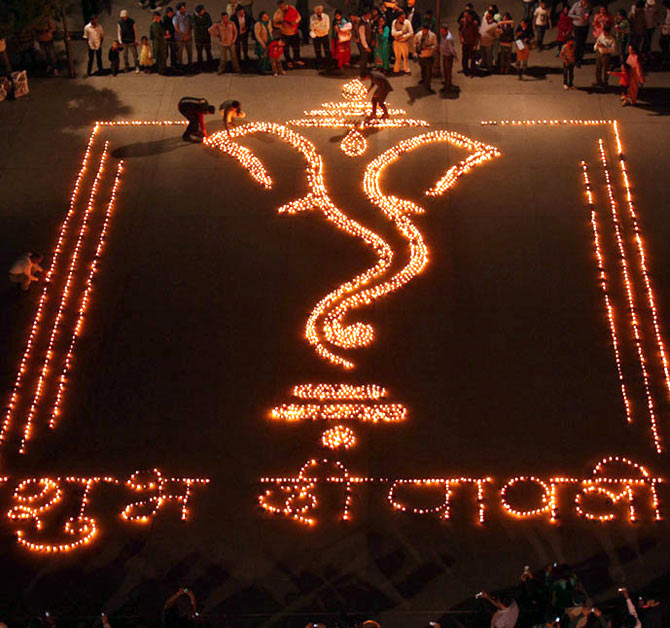
The fireworks industry of Sivakasi has been hit by restrictive explosives laws and growing Chinese domination of the sector. But by adopting new strategies, the cracker companies look set to brighten up the sky.
There’s a sense of the inevitable in Sivakasi town. There have been intense campaigns against firecrackers in cities and the people are buying less of the pyro products of the town.
Besides, access to cheaper fireworks from China is cutting into the earnings of the industry.
On top of that, the government has cracked down on unlicensed manufacturing units. The industry estimates that up to 80 units have shut shop in the past one year and around 20,000 people have lost their jobs.
Strangely, Sivakasi is taking these in stride. The identification and closure of unauthorised units is particularly good news to an industry that has been stigmatised as the hub of child labour and blatant violation of fire-safety norms.
There have been horrendous fires in manufacturing units that have taken a huge toll of lives over the years.
“If you look at these accidents, they have all occurred at unorganised units, which are not run by professionals,” says ASP Arumugaselvam, director, Sri Kaliswari Fireworks, one of Sivakasi’s oldest companies with a turnover of Rs 300 crore (Rs 3 billion).
...
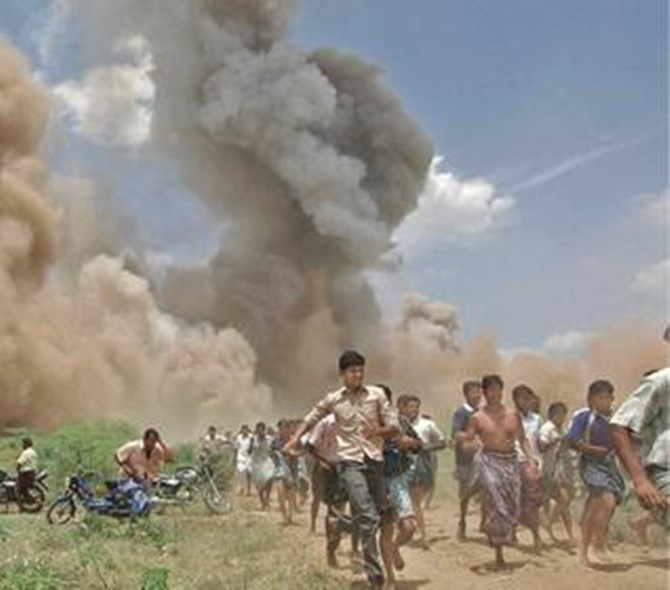
Take for instance the 2012 blast at Om Sakthi Agencies factory, which claimed over 35 lives - the unit was running without proper approvals.
The organised players in the industry say that while there are 780 licensed units, over 700 illegal units have come up over the years. This has prompted the government to, as officials put it, “hunt and shut” such operations. But it will still take 2-3 years to clean up the “mess”.
Sivakasi, about 545 km from Chennai, produces around 90 per cent of the country’s fireworks. The climate here is dry and rainfall very low, facilitating the industry that requires weather to dry the pyro products.
The fireworks produced here for almost 300 days a year are mostly consumed within a single night on Diwali.
In 1940, when the Indian Explosives Rules were enacted and licensing introduced for the production of fireworks, the first organised factory for crackers was established in Sivakasi. Today, the industry is estimated to be around Rs 2,000 crore (Rs 20 billion) and employs about four lakh people directly and indirectly.
The manufacturers want the government to revisit the law pertaining to fireworks. J Tamilselvan, president, Indian Fireworks Association, says that the fireworks industry is governed by the Explosives Act of 1884 and the Explosives Rules of 2008.
...
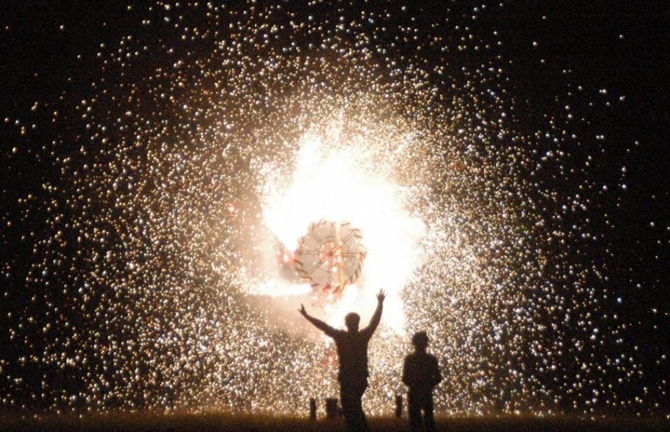
These were framed by the then British government keeping in view the on-going freedom movement.
Jumbo Fireworks (India) Director Rajasingh Chelladhurai, one of the veterans of the industry and the man who was earlier behind Standard Fireworks, says these rules should have been strictly enforced, but inspection of factories hasn’t been vigorous.
He agrees that the rules are outdated, but adds, “The laws have to be changed, but we cannot open up the industry to unauthorised people. Just as illicit liquor is hazardous and has taken lives, unauthorised firecracker units can lead to frequent accidents and loss of lives.”
Normally every year during this time, the Chennai-Sivakasi Podhigai Express is filled with people who come to this town to buy crackers, among them brokers and retailers from various parts of the country. It is strange to see that the railway station is now less crowded.
Outside the station, there are fewer taxis and autorickshaws than earlier. Hotels are reporting a drop of 20-25 per cent in occupancy. The closure of the illegal units selling cheaper products has slowed the flow into the town.
And yet, it is estimated that growth this year will be 10 per cent. “We are actually optimistic of a higher growth since the monsoons have been better than normal,” says AP Selvarajan, partner of the Rs 350-crore Sri Kaliswari Fireworks and president, Tamil Nadu Fire Works and Amorces Manufacturers Association. The demand will be driven mainly from rural parts of the country, he adds.
...
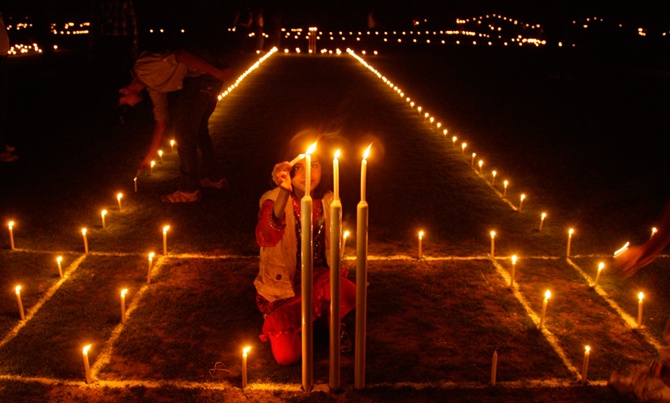
Most industry veterans feel that only those companies that offer quality products and are willing to spend on research and development will survive. Chelladhurai notes that per capita use of fireworks in India is one of the lowest in the world and there is scope for growth.
The top 10 brands in Sivakasi are expected to report 15-20 per cent growth during the current fiscal for two reasons — one, prices have risen 20-25 per cent since last year, and two, the closure of the illegal units will route business to the existing players.
To survive and to grow, the bigger companies are giving a major thrust to R&D and mechanisation, discloses Selvarajan.
For example at Kaleswari Fireworks, over the next 3-5 years, 50 per cent of the production will be automated. The company has identified activities considered high-risk, like mixing and handling of chemicals, and filling of crackers and bombs with incendiaries for the mechanisation.
Similarly, Jumbo Fireworks recently developed a machine for mixing the chemicals for flower pots, chakras, pencil bombs and crackers. The machine neither needs electricity to run nor does it require human interference. “It is not only economical, but also safer,” says Chelladhurai, who invented the machine.
...

While the top companies have already ventured into retail, others are set to follow suit. “I would say it is also a survival game,” says 25-year-old M Sivabalan of Pooja Fireworks, a second-generation firecracker manufacturer.
For the first time this year, his company has set up its own retail outlets at Madurai and Virudhunagar to sell company branded fireworks. Like him, almost a hundred others have acquired licences to sell their products themselves.
While the number of licences issued to set up retail stores between Sattur and Sivakasi was 100 last year, it has crossed 200 this year. On the Virudhunagar-Sivakasi road, around 30 retail stores sold crackers last year. This year the number has gone up to around 55.
“The margins are much better,” rationalises Sivabalan. For instance, a product that he sells for Rs 650 at wholesale can be sold at a retail store for Rs 1,200. “So, even if we can sell at Rs 1,000, we make a good profit,” he says.
A company owner, who also is a franchisee for a jewellery brand and a dealer for a soft drink company, says his margin from the jewellery brand is around 1.5 per cent, while he earns two paise a bottle from the soft drink company. In comparison, his earning is as high as 20 per cent in crackers.
...

While the small-timers are venturing into retail, the big companies have diversified into new businesses, mainly education and hospitality. Today there are colleges and hotels in Sivakasi set up by the big firework companies, including Kaleswari, Standard Fireworks and Sony Fireworks.
It is providential that these companies have diversified because China is slowly eating into revenues. “Our sector has the capacity to earn $3 billion through exports,” says Tamilselvan, “but the Chinese are chipping away at our market.”
Already, according to the Indian Fireworks Association, Chinese imports are estimated at around Rs 200 crore a year. The figure could be a higher Rs 500 crore since much of Chinese products come into India illegally and the trend has been growing in the last three years.
Tamilselvan says that to compete with the Chinese in the global market, the government has to change its rules that restrict export of fireworks.
“We have appealed several times to the industry ministry, but DIPP [Department of Industrial Policy & Promotion] has shown scant interest,” he adds. Also, the National Security Act bans the import of explosive substances, while the use of certain chemicals found in Chinese products is not permitted in India, severely curtailing innovation in fireworks.
...
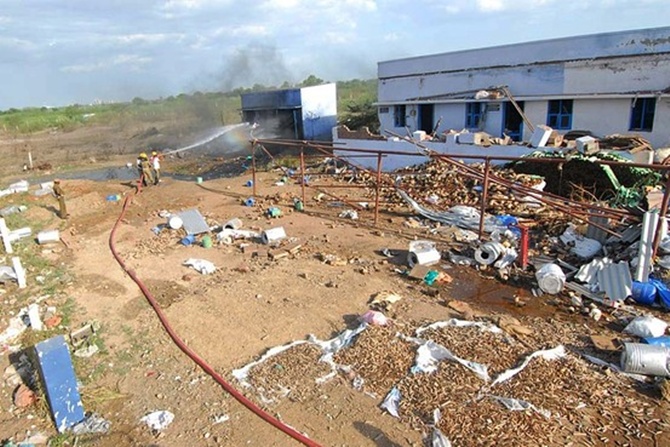
Sivakasi could potentially earn Rs 15,000 crore (Rs 150 billion) per annum through exports. Currently, it only exports around 5 per cent of its products.
Exporters face problems both in shipping and air transport. Mainline vessels to potential markets do not call on the nearest ports of Tuticorin or Chennai. As for the airlines, they are not ready to lift products that are incendiary in nature.
The Chinese firework industry has a big finger in the $7 billion global pie. Its landed cost of exports is 50 per cent lower than for Indian companies and it saves a lot in terms of raw material and labour cost.
Also laws governing the fireworks industry in China are relaxed in contrast to the stringent laws in India.
With a little bit of help from the government, and a whole lot of self- reinvention, the Sivakasi pyro kings could well set the world aflame one day.